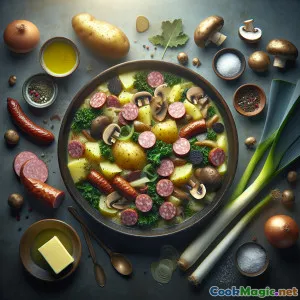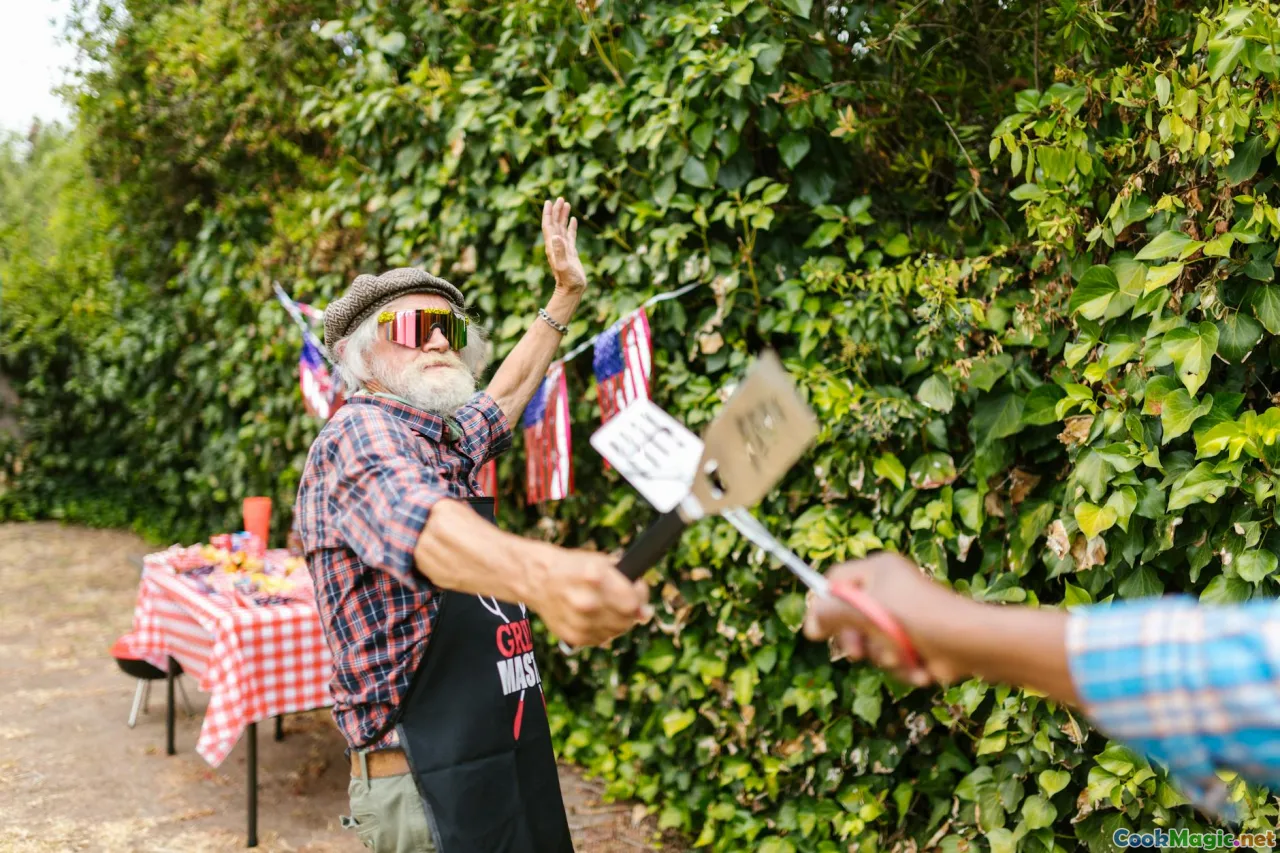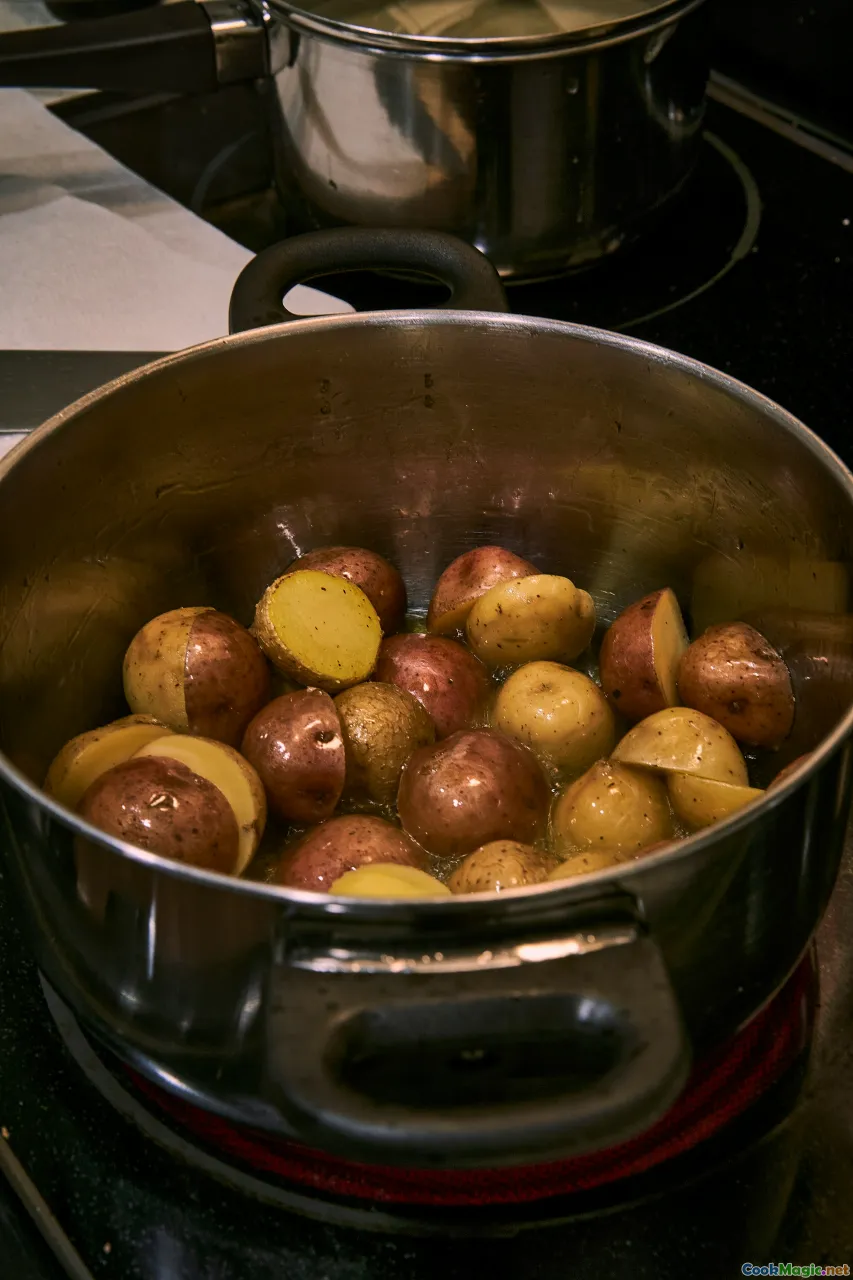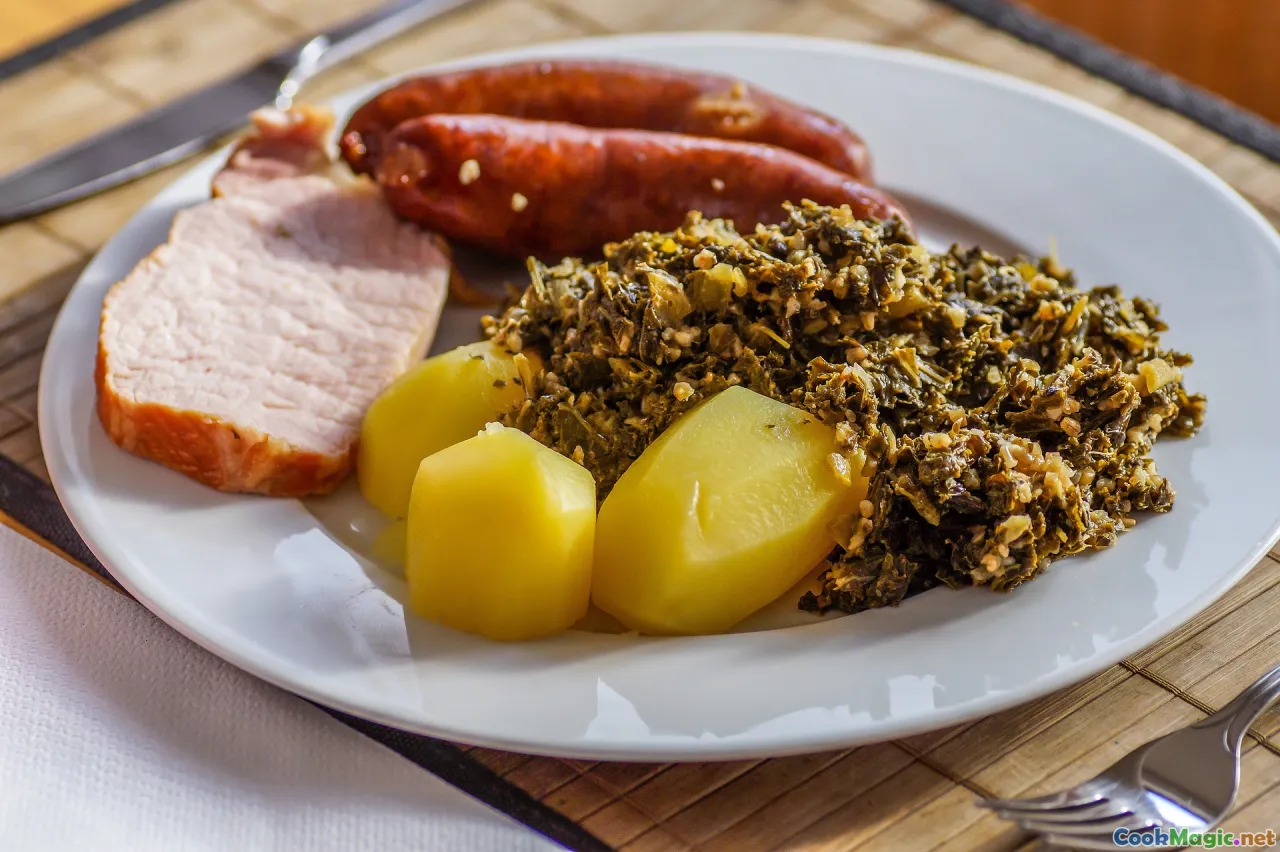
Stamppot van het Veen:乡村荷兰土豆泥
(Stamppot van het Veen: A Rustic Dutch Mash)
(0 评论)食材
-
800 grams Russet 马铃薯
(去皮并切成块)
-
250 grams 卷叶甘蓝
(Stemmed and finely chopped)
-
350 grams 荷兰熏肠(rookworst)
(Traditional, can substitute with smoked kielbasa)
-
150 grams 野生蘑菇
(Mixed varieties (chanterelles, oyster, cremini etc.))
-
40 grams 黄油
(无盐)
-
120 ml 全脂牛奶
(Warm, or substitute with cream for extra richness)
-
0.5 teaspoon 肉豆蔻
(新鲜磨碎)
-
1 teaspoon 盐
(按个人口味)
-
0.5 teaspoon 黑胡椒
(Freshly cracked, or to taste)
-
1 large 洋葱
(切得很细)
-
1 medium 大葱
(White and light green parts, washed and finely sliced)
(去皮并切成块)
(Stemmed and finely chopped)
(Traditional, can substitute with smoked kielbasa)
(Mixed varieties (chanterelles, oyster, cremini etc.))
(无盐)
(Warm, or substitute with cream for extra richness)
(新鲜磨碎)
(按个人口味)
(Freshly cracked, or to taste)
(切得很细)
(White and light green parts, washed and finely sliced)
营养
- 份量: 4
- 每份大小: 1盘 (300克)
- Calories: 560 kcal
- Carbohydrates: 72 g
- Protein: 21 g
- Fat: 22 g
- Fiber: 7 g
- Sugar: 5 g
- Sodium: 1100 mg
- Cholesterol: 55 mg
- Calcium: 148 mg
- Iron: 3 mg
制作步骤
-
1 - Prep Vegetables:
Peel and chop potatoes. Wash, stem, and finely shred the kale. Clean and roughly chop the mushrooms. Chop onion and leeks.
-
2 - Cook Potatoes:
Place potatoes in a large pot, cover with cold water and add a large pinch of salt. Bring to boil, reduce heat to simmer for 15 minutes. After 10 minutes, add kale on top; cover and cook until both are tender.
-
3 - Prepare Mushroom Mixture:
Meanwhile in a skillet, melt half the butter. Sauté onions (add leeks if using) for 3 minutes, then add wild mushrooms. Season with salt, pepper, and nutmeg. Sauté 5 more minutes until golden and fragrant.
-
4 - Warm the Sausage:
While veggies cook, heat the smoked sausage according to packaging—usually by simmering in hot (not boiling) water for about 5 minutes. Let rest before slicing.
-
5 - Mash the Stamppot:
Drain potatoes and kale. Add remaining butter and warm milk; mash coarsely until chunky yet creamy. Fold in sautéed mushroom mixture.
-
6 - Season and Serve:
Taste and adjust seasoning with extra salt, pepper, and nutmeg if desired. Serve hot, topped with sliced sausage.
Peel and chop potatoes. Wash, stem, and finely shred the kale. Clean and roughly chop the mushrooms. Chop onion and leeks.
Place potatoes in a large pot, cover with cold water and add a large pinch of salt. Bring to boil, reduce heat to simmer for 15 minutes. After 10 minutes, add kale on top; cover and cook until both are tender.
Meanwhile in a skillet, melt half the butter. Sauté onions (add leeks if using) for 3 minutes, then add wild mushrooms. Season with salt, pepper, and nutmeg. Sauté 5 more minutes until golden and fragrant.
While veggies cook, heat the smoked sausage according to packaging—usually by simmering in hot (not boiling) water for about 5 minutes. Let rest before slicing.
Drain potatoes and kale. Add remaining butter and warm milk; mash coarsely until chunky yet creamy. Fold in sautéed mushroom mixture.
Taste and adjust seasoning with extra salt, pepper, and nutmeg if desired. Serve hot, topped with sliced sausage.
关于 Stamppot van het Veen:乡村荷兰土豆泥 :的更多信息
Stamppot van het Veen – A Deep Dutch Tradition with a Wildly Rustic Touch
STAMPPOT VAN HET VEEN—literally, "Mash of the Moor"—originates from the peaty wilds and hearty agrarian culture of the Dutch lowlands. Stamppot is a cornerstone in North European comfort cooking, akin to bubble and squeak or Irish colcannon, yet with its own unmistakable character reflecting local soils (het veen) and people. Here, the humble potato meets winter cabbage—most commonly curlykale—as the bedrock, seasoned with warm nutmeg, butter, and made richer still with hearty smoked sausages and wild mushrooms forged of forest and field.
A Recipe Born of Peatlands and Tradition
This dish has roots in centuries of rural Dutch cuisine, designed to sustain through harsh winters, when few green vegetables survive but resilient kale does. In Drenthe and Friesland, families would [traditionally slate the dinner pot with whatever was seasonal—root vegetables, sausage, and preserved autumn mushrooms], layering texture and savor.
In this modernized version, wild mushrooms from local woods (or cultivated varieties found at markets) meet soft sautéed onion and vibrant leeks — the latter optional, as not every region or cook would add them, but they lend a delicate spring-like sweetness and peasantesque aroma. The addition of mushrooms gives the earthiness and "umami" a lift, precisely as peat oils so long ago gave local whiskey or vodka offerings a deeper soul. Atlantic smoked sausage (rookworst) sits like a crown, unchanged generation to generation, always reliable for heartiness and subtle smoky flavor.
Tips, Tricks, and Serving Notes
1. Potatoes: Aim for a floury, "mashy" spud variety – think Russet or Maris Piper. Waxier potatoes can work; just be sure to drain well, as wateriness lessens the creaminess essential to stamppot.
2. Kale or Cabbage: Though kale is traditional in 'het veen' regions (with deep green, stubby winter leaves), you might substitute thick-leafed cabbage or even mix in spinach for a lighter green. During historic potato blights, rutabaga or turnip might enter the mix; be adventurous if you crave old authenticity!
3. Mushrooms: While wild varieties are best, supermarket cremini, portobello, or shiitake are some earthy backups. Wash mushrooms only gently—even a rough brush, if picked yourself—is the better path, as excess moisture can dull their bite.
4. Smoked Sausage: Dutch rookworst is angled for this, but smooth-wood smoked kielbasa blends naturally. For vegetarians: province-produced plant-based sausages now abound and withstand simmering nicely.
5. Dairy Tweaks: Butter substitutes (olive/rapeseed oil or vegan spreads) and non-dairy milk yield fine results, but buck some of the richness that sets Dutch comfort apart.
Cultural Significance & Personal Reflections
To sit for stamppot in a Dutch household is not merely to eat; it’s an act of ritual, marking the drop in autumn leaves and promise of good stories like the [Twelve Nights]—veil-thin warmth stretched across dark windblown landscapes. Stamppot van het Veen is less about presentation than togetherness, evoking warmth, family squares, and the silent keep-away-of-cold of peat fires.
I've found it irresistibly adaptable—a humble, nearly stoic base that rewards experimentation. Substitute arugula if kale is scarce, stir in fried bacon bits in addition to sausage, or even drizzle with sharp aged mustard, as performed in Groningen’s rough-bar eateries. The mash is forgiving, the taste enduring, and each bite seems to carry both the weight and embrace of deep Northern winters.
Give yourself permission to play, and do serve hot, on a larger than usual plate. The overhead fragrance of sausage and nutmeg is joy enough to fill any hearth, ancient or urban.


















